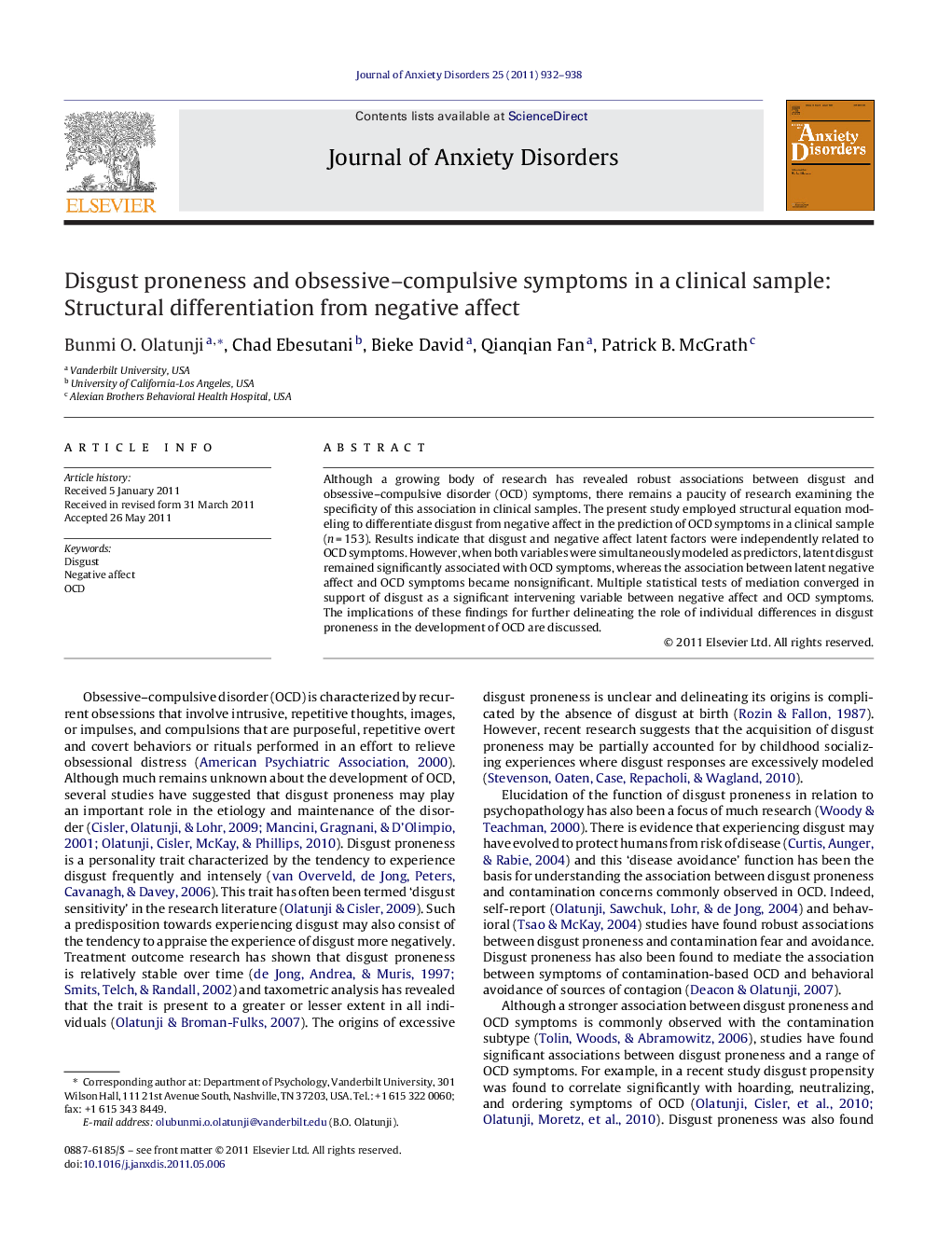| Article ID | Journal | Published Year | Pages | File Type |
|---|---|---|---|---|
| 909612 | Journal of Anxiety Disorders | 2011 | 7 Pages |
Although a growing body of research has revealed robust associations between disgust and obsessive–compulsive disorder (OCD) symptoms, there remains a paucity of research examining the specificity of this association in clinical samples. The present study employed structural equation modeling to differentiate disgust from negative affect in the prediction of OCD symptoms in a clinical sample (n = 153). Results indicate that disgust and negative affect latent factors were independently related to OCD symptoms. However, when both variables were simultaneously modeled as predictors, latent disgust remained significantly associated with OCD symptoms, whereas the association between latent negative affect and OCD symptoms became nonsignificant. Multiple statistical tests of mediation converged in support of disgust as a significant intervening variable between negative affect and OCD symptoms. The implications of these findings for further delineating the role of individual differences in disgust proneness in the development of OCD are discussed.
► Disgust proneness is significantly associated with obsessive–compulsive symptoms in a clinical sample. ► Negative affect is significantly associated with obsessive–compulsive symptoms in a clinical sample. ► The association between disgust proneness and obsessive–compulsive symptoms in a clinical sample is not accounted for by negative affect. ► Disgust proneness mediates the association between negative affect and obsessive–compulsive symptoms in a clinical sample.
